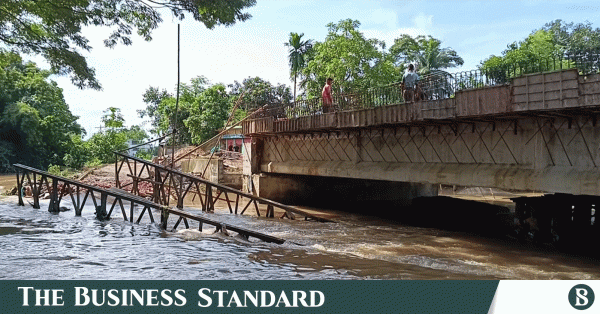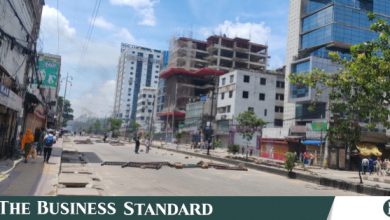Flood situation improves in Brahmanbaria, Akhaura land port yet to resume activities


As roads and embankments were damaged, communication remained suspended and there was no electricity in some villages in the district
Flood situation in Brahmanbaria has started to improve as water has started to recede from households. Photo: TBS.
“>
Flood situation in Brahmanbaria has started to improve as water has started to recede from households. Photo: TBS.
The flood situation in Brahmanbaria has started to improve with flood water receding in Akhaura and other places.
During the last 12 hours, water in the Haora river in Akhaura flowed 51cm below the danger level, decreasing by 4cm.
As roads and embankments were damaged, communication remained suspended and there was no electricity in some villages in the district.
On Wednesday (21 August), Akhaura witnessed severe flooding due to increased water flow from upstream in India and incessant rain. At least 40 villages were hit the hardest, including Bangerchar, Kalikapur, Bautola, Arial and Khalapara.
On Thursday (22 August), the situation deteriorated. At one point, floodwater started to recede as rain stopped, and the water current lost its ferocity.
The situation improved further since today morning (24 August), with floodwater receding from households.
The floods destroyed roads and dams built on the Haora river in at least eight areas, including Arial and Khalapara.
Due to the suspension of vehicular movement in those areas, commercial activities at Akhaura Land Port have stopped, and the exchange of visitors through the international immigration checkpost has also been discontinued.
“Water level in Haora river is decreasing. Currently, the water level is at 5.54 metres at the Gangasagor point of the river. As a result, the flood situation is improving,” said Executive Engineer of Brahmanbaria Water Development Board Monjur Ahmed.
Akhaura Upazila Nirbahi Officer (UNO) Gazala Parvin Ruhi said, “The flood situation in Akhaura is constantly improving. Water is receding from households, and vehicular movement will start quickly after we repair the roads and the dams.”



